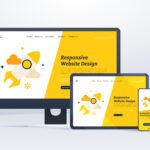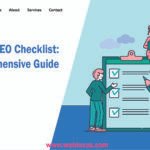In the competitive landscape of e-commerce, optimizing product pages for higher conversions is not just a choice, but a necessity. Imagine, you’re strolling through an online marketplace, clicking around like an adventurous window shopper. Suddenly, your attention gets snatched by a product that practically winks at you—it’s like finding a hidden treasure in a digital cave. Well, that’s no accident! Behind that the implicit techniques of optimizing product pages work like magic spells, turning curious clickers into happy buyers. An integral part of achieving this goal is optimizing product pages for higher conversions. An optimized product page isn’t just a visual showcase; it’s a strategic blend of compelling content, user-friendly design, and persuasive calls-to-action that guide potential buyers through their purchasing journey. We’re here to spill the beans on these secrets, showing you how to sprinkle that same enchantment onto your own product pages.
Techniques for Optimizing Product Pages
Let’s delve into the essential techniques of optimizing product pages that will empower you to create product pages that not only captivate attention but also turn browsers into buyers. So, grab your e-wand, and let’s dive into the art of crafting captivating online shopping experiences!
1. High-Quality Visuals:
Visuals are the gateway to your product’s world and an effective technique for optimizing product pages. High-resolution images that vividly capture the product from various angles provide customers with a tangible understanding of what they’re considering. Incorporate multiple images and, if possible, short videos that showcase the product’s features and benefits. To take it a step further, offer the zoom-in functionality, allowing customers to scrutinize details up close. Clear, captivating visuals instill confidence and address the “What am I getting?” question that every shopper has.
2. Compelling Product Descriptions:
A well-crafted product description is your opportunity to communicate the essence of your product. It’s not just about listing features; it’s about explaining how those features translate into benefits for the customer. Use persuasive language that speaks directly to the customer’s needs and aspirations. Address pain points your product can solve and weave a narrative that helps the customer visualize themselves using the product. By pre-emptively answering questions and concerns, you reduce friction in the decision-making process.
3. Clear and Visible CTAs:
Your call-to-action buttons are the bridge between curiosity and commitment. Make them impossible to miss by using contrasting colors that draw attention. Employ actionable language that communicates the immediate action you want the customer to take. Whether it’s “Add to Cart,” “Buy Now,” or “Get Yours Today,” ensure that the buttons are strategically placed and consistently visible as the customer scrolls down the page.
4. Detailed Product Information:
Transparency is key to building trust in online transactions. Provide a comprehensive rundown of product specifications, dimensions, materials, care instructions, and any relevant certifications for optimizing product pages. This not only helps customers make informed decisions but also showcases your commitment to customer satisfaction and product quality.
5. Customer Reviews and Ratings:
Nothing builds trust like genuine customer feedback. Display authentic reviews and ratings prominently on your product pages. Positive reviews act as powerful social proof, influencing potential buyers’ decisions. Encourage customers to leave reviews by sending follow-up emails post-purchase. Responding to reviews, both positive and negative, shows that you value customer input and are committed to improvement.
6. Trust Signals and Security:
Online consumers tend to exercise caution when it comes to sharing their personal and financial details. Display trust badges, security seals, and payment icons prominently to assure customers that their data is safe. Highlight your privacy policy and terms of service to provide further reassurance. These trust signals create a sense of security and help overcome any hesitations the customer may have.
7. Mobile-Friendly Design:
With mobile devices accounting for a significant portion of online traffic, optimizing product pages for mobile users is non-negotiable. The responsive design guarantees a seamless experience across all devices. Buttons, images, and text should be appropriately sized and spaced to accommodate smaller screens without sacrificing usability.
8. Cross-Selling and Upselling:
The art of cross-selling and upselling lies in presenting additional value to optimizing product pages without overwhelming the customer. On your product pages, incorporate sections that suggest related products or accessories that complement the customer’s choice. Use phrases like “You May Also Like” or “Complete the Look” to gently guide customers toward more options.
9. Simple Checkout Process:
Streamline the path to purchase by creating a smooth and intuitive checkout process. Minimize distractions and unnecessary form fields that could deter the customer. Offering guest checkout options can be especially beneficial, reducing friction for first-time buyers.
10. Shipping and Returns Information:
Being transparent about shipping options, costs, and estimated delivery times sets clear expectations. Highlight your return policy, making it easy to find and understand. A hassle-free returns process can make the difference between a one-time purchase and a repeat customer.
11. Live Chat Support:
Real-time assistance can prevent customers from abandoning their carts due to unanswered questions. Implementing a live chat feature allows customers to interact with a representative who can provide instant clarification and guidance. It’s an effective way to offer personalized assistance and build trust.
12. A/B Testing and Continuous optimization:
In the pursuit of optimizing product pages, make effective use of the potency offered by A/B testing techniques. Experiment with different variations of headlines, images, colors, and CTAs to identify what resonates best with your audience. Regularly analyze data to make informed decisions that lead to ongoing optimization.
Conclusion:
By implementing these techniques of optimizing product pages, you’re not only creating visually appealing pages, but you’re also creating a seamless and engaging shopping experience that encourages visitors to take action. Remember, the journey from a visitor to a customer is a series of micro-decisions, and each element on your product page plays a crucial role in guiding them along that journey. By combining compelling visuals, persuasive content, user-friendly design, and a commitment to trust, you can create product pages that not only convert but also lay the foundation for lasting customer relationships.



